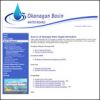FACT SHEETS FOR AGRICULTURE: Partnership for Water Sustainability assists governments of Canada and British Columbia to develop guidance documents for water licensing and storage (January 2022)

“Farmers in British Columbia often need storage facilities to supply farmstead water or to support water licences from surface or groundwater sources that do not provide sufficient flow during summer months. Water storages can be on either private or crown land, but a licence will be required to store water that is vested to the Province. Storages can be in the form of dugouts, reservoirs with small berms, or large reservoirs behind a dam. The rules and regulations that must be followed will depend on the type of storage facility being built,” stated Ted van der Gulik.
ACCESS AND DOWNLOAD A SET OF REPORTS ON: British Columbia’s Agriculture Water Demand Model – learn about province-wide application and results

“This water management planning tool calculates current and future agriculture water demands in British Columbia, and accounts for climate change. Inputs for the AWDM include land use, soil and climate information. The field component of the AWDM program centres on compilation of land use inventories for all regions of the province. The power of the tool is in the provincial database, in particular the 500 metre gridded climate cells,” stated Stephanie Tam, Ministry of Agriculture.
Water Licensing Calculator: Managing Water as One Resource in British Columbia

Passed by the British Columbia Legislature in Spring 2014, the Water Sustainability Act and new regulations were brought into effect on February 29, 2016. It is a game-changer because it recognizes the connection between land use actions and the implications for the both the water cycle and watershed sustainability. “The Water Sustainability Act recognizes that groundwater and surface water are interconnected and addresses the need to manage them together,” stated Minister of Environment Mary Polak.
Where’s the Water ? – The Devastation of Drought
A drought occurs when a region becomes deficient in its natural water supply whether on the surface or underground. Droughts can last for months and even years. In general, droughts occur when a region receives less than the average rainfall in an annual year.
Irrigation Industry Association of BC – IIABC
The Irrigation Industry Association of British Columbia was formed in 1979 to provide a forum for manufacturers, suppliers, and contractors to get together to communicate and exchange information about the irrigation industry.
British Columbia’s Irrigation Scheduling Calculator
The Irrigation Industry Association of British Columbia (IIABC), with funding from the National Water Supply Expansion Program, has developed a new agriculture irrigation scheduling calculator. The calculator will determine an irrigation schedule for all types of agricultural irrigation systems and crop types.
Okanagan Basin Water Board – Sources of Water Supply Information

Okanagan Basin Water Board
Water supply information for the Okanagan is available from several sources, including the River Forecast Centre, Agriculture and Agri-Food Canada, Environment Canada, and the Ministry of Environment.
Partnership Committee on Agriculture and the Environment
The Partnershipn Committee on Agriculture and the Environment provides a single-window approach for consultation on enviornmental issues that affect farmers and agriculture. The Partnership Committee provides an opportunity for local government representatives to meet face to face with the people who initiate policies and legislation that directly affect farmers.
Farmwest
The Farmwest climate station network is part of a water conservation initiative for more effective and efficient use of irrigation water.
DROUGHT FACTSHEETS and PUBLICATIONS

The “Drought Publications” webpage provides a list of publications and factsheets on drought and water conservation. Links are provided for you to access the listed publications.
InfoBasket
InfoBasket is organised into areas of interest called Communities (e.g. Apiculture or Beef). Each Community is comprised of folders, such as Production and Processing, Business Management and Finance, Marketing and Trade, Regulations and Legislation, Directories and Contacts and Statistics and Market Data. Within these folders you will find links to documents specific to your agri-business needs.
BC’s PATH TO FOOD SECURITY IS THRU WATER SECURITY: “When we think of all the changes in thinking that we have gone through in the last 50 years, the Land Commission Act really is a testament to the incredible foresight demonstrated in 1973,” stated Joan Sawicki, former MLA

“At a time when most other jurisdictions continue to lose their food lands, BC’s ALR remains the most successful agricultural land preservation program in North America. With food security now becoming a top-of-mind public issue, thanks to the foresight demonstrated in 1973 we still have “the land” – and I submit we would not still have the option for viable agricultural sectors in high growth areas like the Lower Mainland or the Okanagan without the ALR. The ALR has been doing exactly what it was designed to do,” stated Joan Sawicki.
OP-ED ARTICLE: Kim Stephens – Celebrating a decade of living water smart in B.C., but where to from here? (published in the Vancouver Sun in June 2018)

“A game-changer flowing from Living Water Smart is the B.C. Agricultural Water Demand Model. It accounts for climate change, is applied to establish future needs for Agricultural Water Reserves, and is the engine for the online B.C. Agriculture Water Licence Calculator. Developed to support implementation of the B.C. Groundwater Regulation, the Calculator quantifies outdoor water use for any property in B.C., including residential,” wrote Kim Stephens.
OP-ED ARTICLE: More irrigation is key to food security in B.C. (published in the Vancouver Sun in November 2017)

“The agricultural area irrigated in the Fraser Valley is already substantial, and is about 1.4 times that in the Okanagan. This is a fact that few people know,” wrote Ted van der Gulik. “the Fraser Valley alone could provide two-thirds of the additional irrigated land area that is needed for food security. Think about that. The Fraser River would be able to supply much of the water required. But delivering the water would require a huge investment in infrastructure.”

